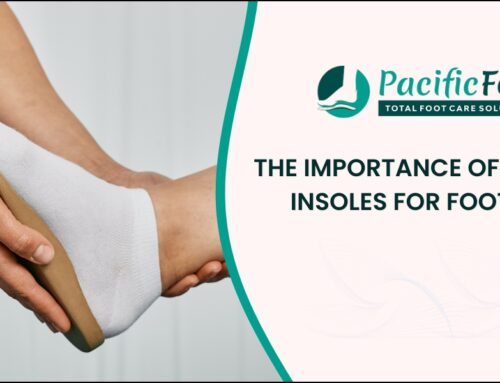When managing diabetes, it is crucial to pay special attention to the health of your feet. Diabetic patients often face unique challenges due to the risk of neuropathy, poor circulation, and foot ulcers, which can lead to severe complications if not managed correctly. One of the most effective ways to reduce these risks is by choosing the right footwear. Proper footwear not only helps to protect diabetic feet from injuries but also promotes healthy circulation, reduces pressure points, and prevents infections.
The Importance of Diabetic Foot Care
Diabetes can damage the nerves and blood vessels in your feet, resulting in diabetic neuropathy and poor blood flow. Neuropathy causes a loss of sensation in the feet, making it difficult to notice cuts, blisters, or sores. Poor circulation further complicates this by slowing down the healing process, increasing the risk of infections and ulcers.
Wearing appropriate footwear designed for diabetic foot care is essential to prevent injuries and ensure your feet remain protected. Ill-fitting shoes can create pressure points, leading to calluses, corns, or worse, ulcers that can become infected. Proper footwear provides cushioning and support to minimize these risks.
Key Features of Diabetic Footwear
Selecting the right footwear for diabetic feet involves looking for certain key features that cater specifically to diabetic needs. Here are some of the most important considerations:
1. Wide and Deep Toe Box
A wide and deep toe box is crucial for diabetic patients as it provides extra space for the toes, preventing crowding and reducing the risk of pressure sores or blisters. This is especially important for individuals with foot deformities like bunions or hammer toes, which can easily be aggravated by tight shoes.
2. Seamless Interior
Diabetic shoes are often designed with a seamless interior to reduce friction that can cause irritation or blisters. Even minor rubbing can lead to sores, which may go unnoticed due to neuropathy. A seamless design minimizes this risk, creating a smooth and comfortable environment for sensitive diabetic feet.
3. Extra Cushioning
Cushioning in diabetic shoes is essential for absorbing shock and reducing pressure on high-stress areas of the foot. The additional padding also helps protect against injuries and provides extra comfort, especially for individuals who spend long hours on their feet.
4. Arch Support
Proper arch support is important to distribute weight evenly across the foot and relieve pressure from specific areas. Diabetic patients often experience a collapse in their foot arch, leading to plantar fasciitis or other foot conditions. Good arch support helps to maintain foot alignment, preventing these complications.
5. Adjustable Fit
Shoes with adjustable straps, laces, or Velcro provide a customized fit, which is important for diabetic patients whose foot size and shape may change due to swelling. An adjustable fit ensures that the shoes are neither too tight nor too loose, reducing the risk of pressure points or injuries.
6. Breathable Material
Diabetic shoes should be made of breathable materials like leather or mesh to allow proper air circulation. This helps in keeping the feet dry and prevents excess moisture, which can lead to fungal infections or sores. Breathability is particularly important for individuals prone to sweaty feet or foot odor.
Why Regular Footwear May Not Be Enough
Although regular shoes may provide general foot protection, they do not offer the specialized support and protection needed for diabetic feet. Common shoes can have rough seams, improper arch support, and tight fits that can cause harm to sensitive diabetic feet. Even something as simple as a small pebble inside a shoe can lead to a serious infection if unnoticed.
Additionally, regular shoes may not provide adequate shock absorption, putting extra stress on the foot and increasing the risk of ulcers or injuries. Diabetic footwear is designed specifically to alleviate these issues, ensuring that the feet remain safe and comfortable throughout the day.
Preventing Common Foot Complications
One of the major concerns for diabetic patients is developing foot ulcers. Foot ulcers are open sores that form on the bottom of the foot and can become infected if left untreated. Ill-fitting shoes are often the cause, as they create pressure points that lead to blistering and skin breakdown.
Proper footwear can help prevent the formation of these ulcers by distributing pressure evenly across the foot and minimizing friction. In addition to wearing the right shoes, it is essential to inspect your feet daily for any signs of irritation or injury. Early detection is key to preventing complications and ensuring that small issues do not escalate into larger problems.
The Role of Custom Orthotics in Diabetic Footwear
Custom orthotics can be an invaluable addition to diabetic footwear. Orthotic insoles are designed to provide personalized support, reduce pressure points, and improve the overall alignment of the foot. These insoles can be tailored to the specific needs of diabetic patients, addressing issues such as flat feet, high arches, or pronation.
By using custom orthotics, diabetic patients can further protect their feet from injury and ensure optimal comfort. These insoles can be used in combination with diabetic shoes to provide an extra layer of protection and support.
How to Choose the Right Diabetic Footwear
When shopping for diabetic footwear, it is important to consult with a healthcare professional or a podiatrist to ensure you are selecting the best option for your feet. Here are some additional tips to keep in mind when choosing diabetic shoes:
- Measure your feet: Always measure your feet before purchasing shoes, as foot size and shape can change over time, especially with diabetes.
- Try shoes on at the end of the day: Feet tends to swell throughout the day, so it is best to try on shoes in the evening to get a more accurate fit.
- Wear the same type of socks you will wear with the shoes: This ensures the shoes fit properly when worn with your typical socks.
- Break in new shoes gradually: Wear your new shoes for short periods at first to ensure they are comfortable and do not cause any irritation.
Importance of Diabetic Footwear for Optimal Foot Health
Footwear plays a vital role in the overall foot health of diabetic patients. By choosing shoes designed specifically for diabetic feet, individuals can reduce the risk of injuries, ulcers, and infections. The right diabetic shoes offer features like a wide toe box, seamless interior, extra cushioning, and good arch support to provide optimal protection and comfort. Remember, the best way to protect your feet is to stay proactive—inspect your feet regularly, choose the right footwear, and consult with a healthcare professional if you have any concerns. Pacific Foot Insoles provide excellent support, featuring a wide toe box, seamless interiors, extra cushioning, and superior arch support to ensure optimal protection and comfort.





